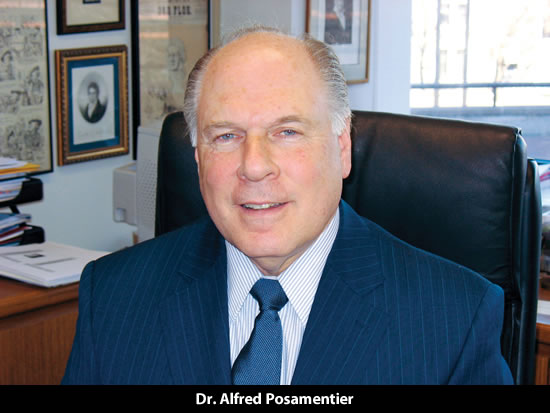THE MATH COLUMN
Specialized High School Exams
By Al Posamentier, Ph.D.

Over the past several decades high-level education decision-makers and administrators from various European countries, such as England, Germany, and Austria came to New York City to visit some of the specialized high schools, including Stuyvesant High School, Bronx High School of Science, and Brooklyn Technical High School. To say they were hugely impressed could possibly be an understatement. They were awed by the level of instruction, student motivation and overall ambience of the schools. Naturally, they were curious to know how the students were selected for the schools. They were a bit surprised that the sole criterion for selection was a written exam, since oral exams and teacher recommendations play a greater role in the European countries. They noticed the paucity of African-American and Hispanic students and a large representation of Asian students and wondered why that happened.
This is now a cause for concern in New York City since recent numbers show that of almost 900 acceptances for next year’s entering class at Stuyvesant High School less than one percent are either African-American or Hispanic students. In recent years, many private examination support programs have appeared throughout the city, such as Mathnasium, offering courses and tutoring programs during evenings and weekends at a cost to the participants. This burgeoning privatization of preparation for elite public high schools introduces a lack of equity of access for low-income students who cannot afford private prep training and who are, furthermore, often students in the most fragile of the city’s middle schools.
Therefore, the question now facing New Yorkers is how to improve the diversity of the population in our specialized high schools. We can find solutions to this problem through a series of teaching and learning initiatives to support the performance of these underrepresented students and to improve their achievement on this high-stakes test, rather than to eliminate the test itself. Research over the years has demonstrated that preparation for high-stake tests (such as the SAT and ACT) has a favorable effect on performance outcomes. To even the playing field, an effort should be made to provide city-and-state-funded resources for extracurricular experiences in middle schools across the city, similar to that of the private mathematics support programs, which focus on test-taking skills and problem-solving strategies. This could well require training teachers to become experts in teaching problem-solving skills which are beyond typical textbook exercises.
In mathematics instruction, the art or skill of problem solving has been largely neglected in today’s classrooms, which focuses largely on “teaching to the test.” One would think that this approach would support the entrance examinations, yet the tests for which mathematics classes are being prepared are content-oriented such as the New York State Regents Examinations, since teachers are frequently being assessed by their students’ performance on these tests.
To illustrate problem-solving skills, consider that the approach to a mathematics problem can often be described as the “poet’s way” or the “peasant’s way.” For example, one illustrative problem might be to find the number of games needed to be played in a single-elimination basketball tournament to get a champion that begins with 25 players. This can be approached in two ways: The peasant’s way would be to do a simulation of the tournament and focusing on the winners while keeping count of the number of games played. On the other hand, the poet’s way would simply ask how many losers must there be to get a champion? And the answer is 24 losers. This requires 24 games and the question is answered very elegantly. Such training can significantly enhance success on these entrance examinations.
It would be a huge disservice to the general population of New York City to lower the standards of these specialized programs for gifted youngsters. Over many decades these schools have served the population well in producing outstanding scholars in a variety of fields. They have been a model for the education of gifted youngsters, favorable recognition in other cities in the United States and abroad. Let’s not dumb-down our education program. Rather let’s make the financial investment and provide a meaningful program to bring up to speed more students who may not have had the resources to access additional support which would allow their talents to flourish. #
Dr. Al Posamentier is professor emeritus and former dean, CCNY. Now Distinguished Lecturer at NYC College of Technology, Brooklyn, NY.
